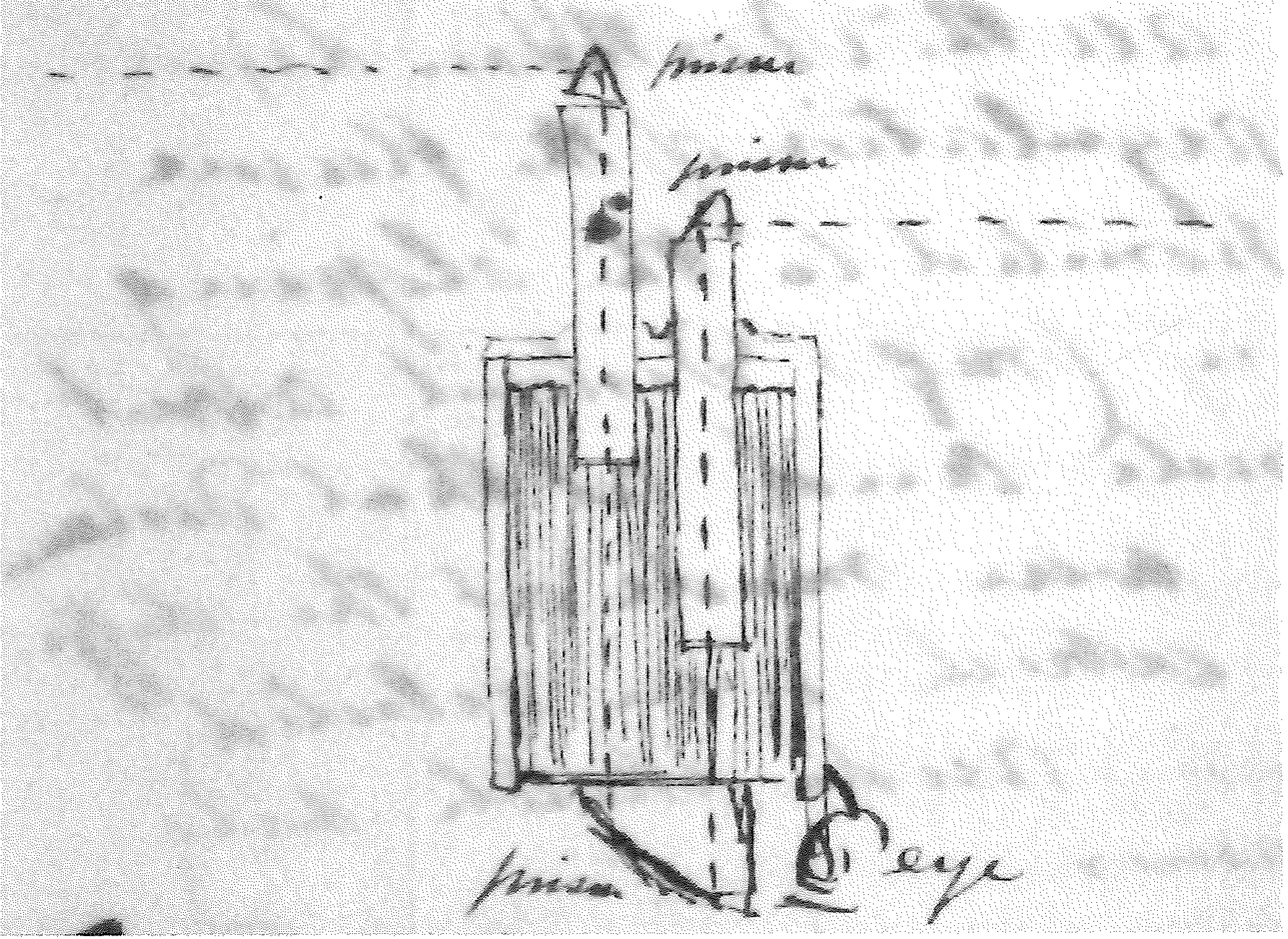Thomas Stevenson to Faraday 2 November 1860
Chambers, 84, George Street, | Edinburgh Nov. 2 1860
My Dear Sir
I am very glad you have asked me about the diagram1.
The object of the experiment was not to obtain the absolute intensity of the flame but only to ascertain the relative intensities at different angles of elevation and depression and therefore no standard of intensity was preserved. The lens was placed exactly vertical and at the level shown in the accompanying engraving one of which is hung up in all the Northern Light Stations for the regulation of the flame. The lens was pointed to the sloping face of Salisbury Crags distant about quarter of a mile and at that distance the observations were made at the different Stations which were selected. The accompanying rude sketch will make this plainer[.]

The remarkable deficiency which you noticed is I think due to the Lamp glass as you suggest although we use the French chimney which has a very gradual curve.
I may mention that I am now getting another & I hope a more generally useful photometer which is to contain two sliding tubes or cylinders as shown below

Each tube has at top a prism moving on a hinge. By means of rotating these cylinders on their vertical axes and of kanting2 the prisms on their hinges the rays proceeding from two distant Light houses, however different in elevation or in azimuth may be thrown downwards on the bottom prism where the eye is placed. Then by the vertical movement of the tubes the column of absorbing medium may either be lengthened so as to produce extinction, or otherwise altered so as to produce equalization of the brightness of the images.
I remain | My Dear Sir | Yours faithfully | Thomas Stevenson
P.S. I request as a favour that you will not trouble yourself by acknowledging the receipt of this note. T.S.
Professor Faraday | &c &c
Please cite as “Faraday3876,” in Ɛpsilon: The Michael Faraday Collection accessed on 2 May 2024, https://epsilon.ac.uk/view/faraday/letters/Faraday3876